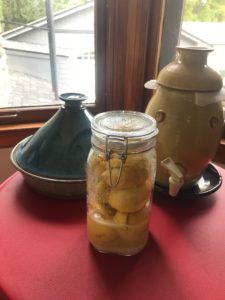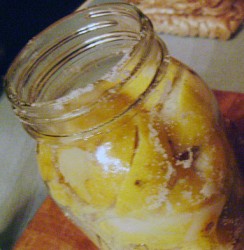Renowned chef Paula Wolfert gave us inspiration at the Clay Coyote for making a Moroccan cooking dish called a tagine. You can see in our previous article the history of
Mourad Lahlou’s preserved lemons
Every culture has their own unique contribution to the culinary world. I was interested by this quote from Chef Mourad Lahlou’s new book, and wanted to share it. ” I’m


